This post was most recently updated on September 22nd, 2019
OK, I have a ‘thing’ about fake flowers.
Don’t worry, I’m not going to pull an Oprah and tell you that I don’t use them! (BTW, I love Oprah, just sayin’. ) I use them more than the real ones. Because, well, let’s be real: I live on an island in the middle of the Atlantic.
And, no, unfortunately, its not Bermuda. (Oh, how I love Bermuda – if you haven’t gone, you must!)
No, my island is just a little further north! That means that our spring/summer gardening season is relatively short, and bunches of fresh flowers don’t come cheaply the rest of the year.
My ‘thing’ about fake flowers is that I don’t like when they look, well….fake. You know the type, right? Like electric blue tulips that look they just came off the assembly line? (Psst…did you know that there is no such thing as a pure blue tulip? Tulips come in a wide variety of colors, except pure blue! Apparently, tulips with “blue” in the name have a faint violet hue. Source)
After years of hits and misses, I think I’ve finally figured out a few tricks to get the look of real flowers when using fakes,
Tip #1: Quality over quantity.
I swear I could easily pull a Stacey and Clinton-style intervention when I spot somebody at the check out with armfuls of neon flowers!
Faux flowers have come a long way in the past decade, to the point that it can be impossible to tell they aren’t real. So why settle for ones that don’t look the part?
Yes, the higher-quality ones are more costly, but, personally, I’d rather spend the same amount on a small bundle of flowers that look like they’ve been picked from a garden, than on a huge bunch that look manufactured. It just means you’ll have to use a smaller vase, but for me, that’s a fair sacrifice.
Tip #2: If it doesn’t look real, it probably isn’t. 😉
How do you pick the fake florals that look natural?
I am, by no means, a botany expert – or even a good gardener, for that matter.
But we’ve all held real flowers in our hands, right?
Things to consider…
- Does this seem like a natural color for this type of flower? (You don’t need to be a botanist…just make a judgement call)
- Is the color of the petals completely uniform, or does it have more authentic-looking fading at the tips?
- Are the leaves flat and solid green, or do they have veins and natural-looking discolorations?
- Does the stem have ‘natural’-looking bumps and imperfections?
- Does it ‘feel’ real to the touch? Does it have texture, or is it unnaturally smooth?
- Can you bend the stem? Are the leaves and petals pliable? (This is important so you can easily arrange them in a natural-looking way at home.)
Tip #3: Arrange them ‘naturally’.
OK, so you’ve ‘picked’ some nice real-looking flowers, and brought them home. Yay you! The next thing to do to make them look real is to arrange them like real flowers.
Real flowers always have little imperfections: like a leaf that’s starting to droop, the petal that’s starting to curl, or the bloom that’s opening too soon.
If you’ve bought flowers that are pliable, you can easily bend the leaves and petals to mimic this kind of authenticity.
- Pry open a few blooms more widely than the others.
- Curl a few of the leaves.
- Bend a stem to make a flower droop.
- Or even drop a few petals at the base of your vase like I did in this arrangement on my “Singing in the Rain”-inspired Spring mantel.
Tip #4: Real flowers need water.
Now you’ve got them arranged all nice and natural like.
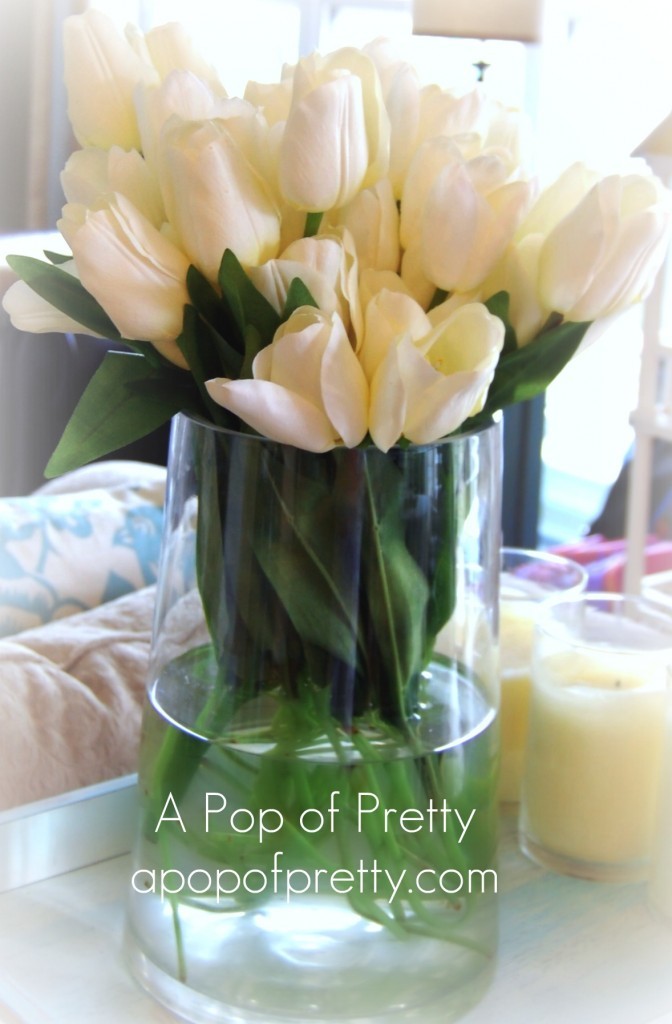 If your vase is glass, fill it with water, just like you’d do with natural flowers. This is a sure fire way to trick the eye into seeing a freshly-cut flower! Oh, and change the water regularly so it doesn’t look murky like it does in my vase at the right, lol.
If your vase is glass, fill it with water, just like you’d do with natural flowers. This is a sure fire way to trick the eye into seeing a freshly-cut flower! Oh, and change the water regularly so it doesn’t look murky like it does in my vase at the right, lol.
Tip #5: Every flower has its season.
Most real flowers have a ‘season’. So after a season has passed, I try and change my flowers up – spring flowers for spring (tulips, hydrangeas, hyacinths,), fall flowers for autumn (sunflowers, ornamental berries, mums) and so on. If you have a favorite bunch of flowers that you like to keep out all year, that’s cool too. But be sure to clean them up regularly: nothing says “fake flower” better than dusty leaves and petals! I try to use white and cream flowers for the ones that stay out awhile…they hide dust better than deeper hues ;-).
Hope you find these tricks useful!
Do you have any tips on faux flowers to share? If so, please do!
Until next time, happy floral arranging!
Kerri 🙂
PS. I’m sharing this post over at Beth’s!
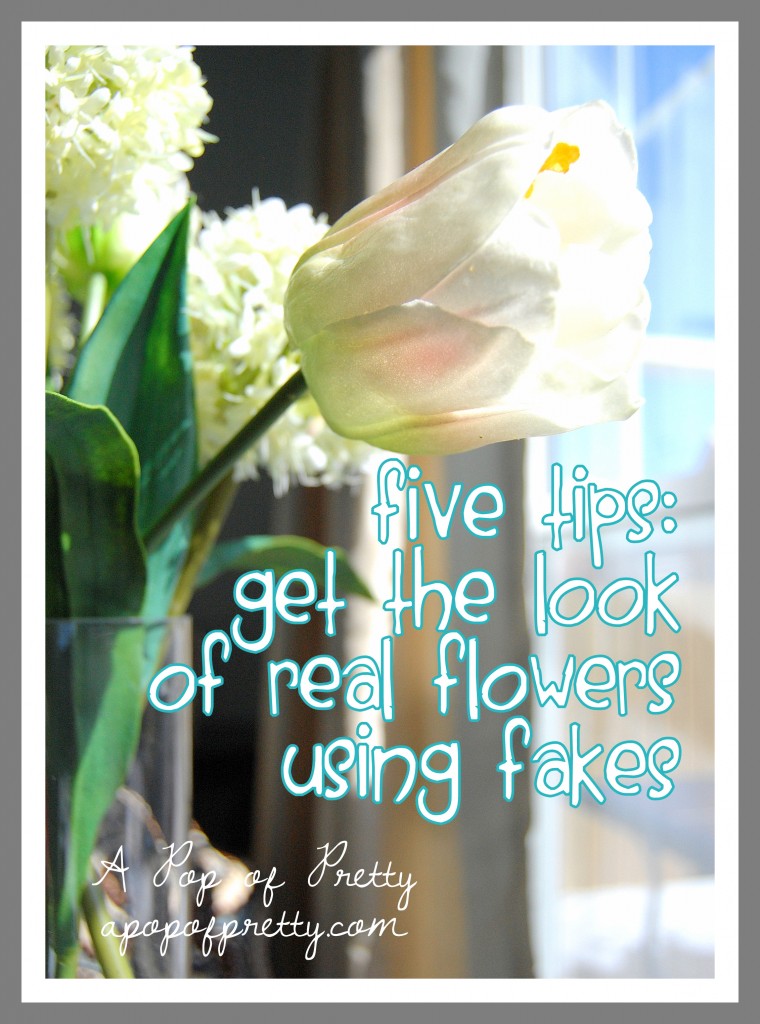
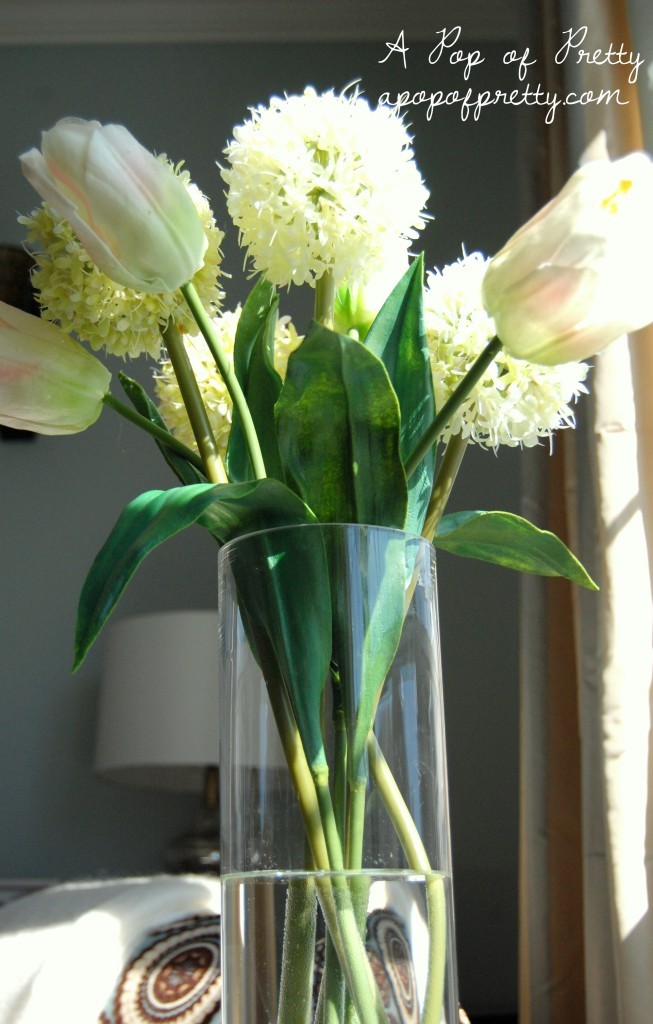
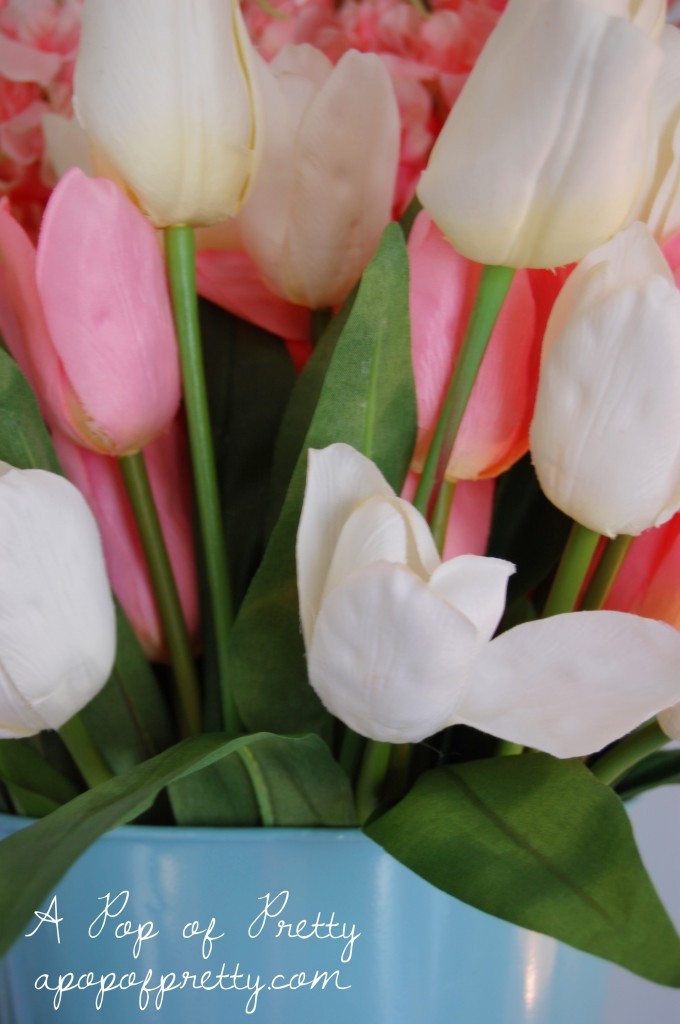



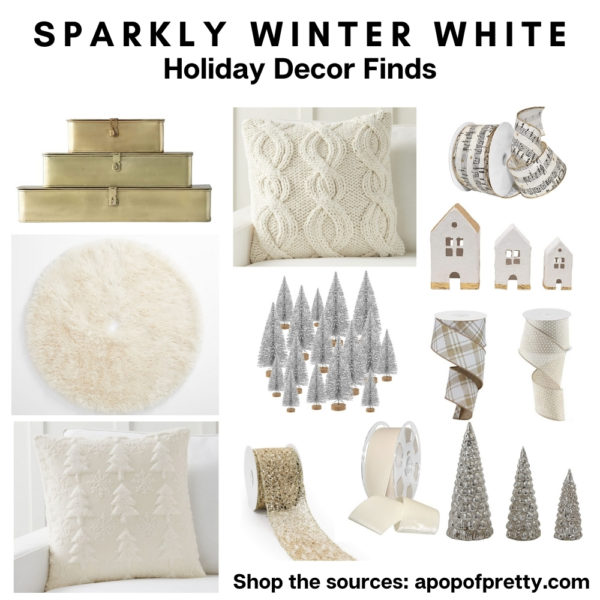
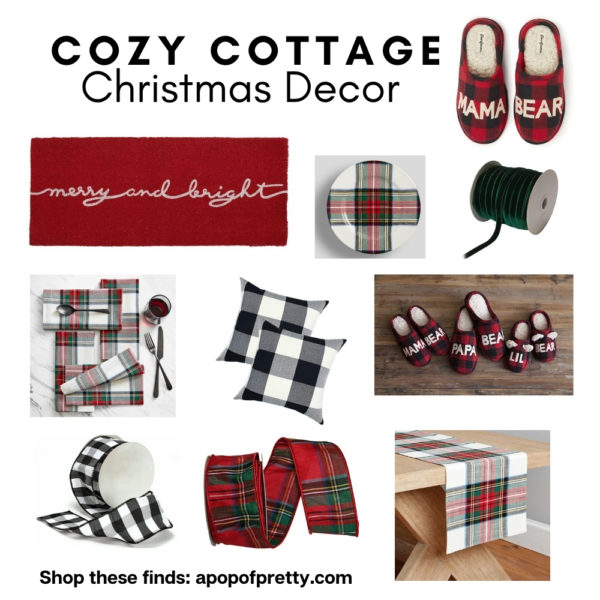
i’m so glad i found your site! i usually don’t like flowers bc they die :/ they’re lovely and i love the feeling they give me when i see them but i am so unhappy once they go limp on me. i’m going to take some of these tips and see about getting some artificial ones so i can have some “flowery-like” feelings :]
jen
http://www.livetreschic.blogspot.com
KL, Thanks for the birthday shoutout!! The pics of AP`s house are amazing! And yes, if only my house looked so neat and tidy all the time too! I`m loving the cushions you gave me! They look awesome on the new sectional and have finally given me the accent colour I was desperately seeking! Thanks! xo
Pier One has amazing faux flowers. The only thing I do not like about faux flowers is that they get dusty so quickly.